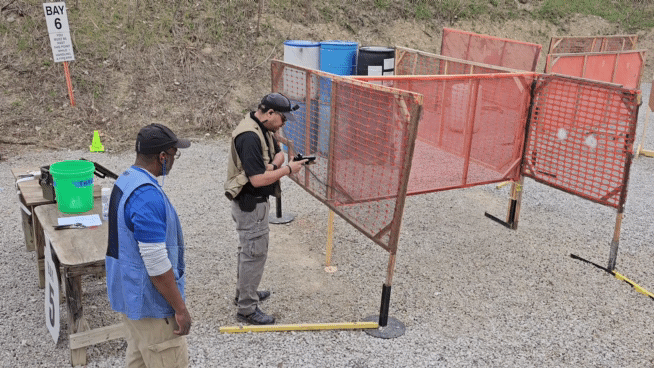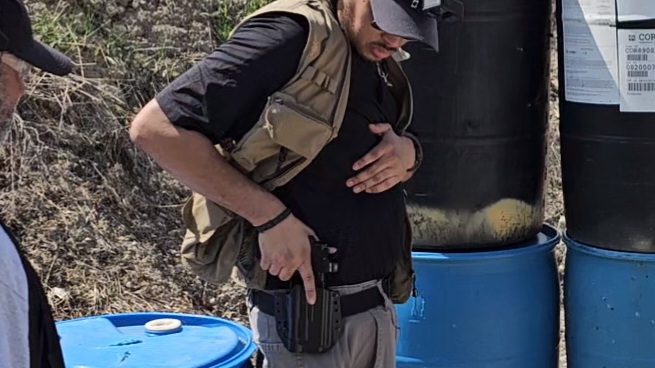Aside from shooting, reholstering a handgun is the most dangerous activity an individual can perform with a firearm; it’s the activity where most accidental self-inflicted gunshot wounds occur. In mid-March, the news out of Lansing, MI reported that a man inadvertently shot himself while attempting to reholster a handgun. While we often make firearm safety rules a habit and apply them most of the time, we should remember that they apply when reholstering the gun also.
Understanding that the gun is loaded and needing to treat it as such; making certain that the muzzle doesn’t cover anything that you don’t want to destroy; and that your finger is off the trigger and above the trigger guard are important in ALL gun handling, whether you are engaging the target or are reholstering. Application of the safety rules when reholstering means that we need to take our time. After engaging the target and recognizing that there are no other threats present or that the drill/exercise/engagement is completed, there is nothing that requires that you quickly reholster, so why rush at that point? Competitively, you don’t get more points for holstering faster, and reholstering more quickly after engaging a threat has no bearing in the effectiveness of addressing the threat.
To reduce the likelihood of a self-inflicted gunshot wound when reholstering, here is what I do:
- Maintain a full firing grip with the dominant hand, with my trigger finger above the trigger guard and on the slide of the gun. Usually, I keep it on the seam between the frame and the slide.
- Create a clear path between the firearm and the holster by moving any and every article of clothing out of the way – shirts, jackets, ties, draw strings… ALL OF IT. You may use your non-gun hand to accomplish this if necessary.
- SLOWLY and CAREFULLY LOOK AND GUIDE the gun into the holster until you feel the holster retention engage the firearm.
- If you’re carrying appendix, lean back and open your hips, then SLOWLY AND CAREFULLY LOOK AND GUIDE THE GUN INTO THE HOLSTER.

- If you’re carrying strong side, lean slightly to provide clearance between your gun and holster, then SLOWLY AND CAREFULLY LOOK AND GUIDE THE GUN INTO THE HOLSTER.

This is important – so many people don’t look the gun into the holster, and it’s dangerous. By not looking and guiding the gun into the holster, you won’t see the articles of clothing that could get caught inside the trigger guard, which could create enough pressure to engage the trigger to the rear and discharge a round.
The simplified version of reholstering is to slow down, keep your trigger finger on the slide, clear the way between the gun and holster, and SLOWLY AND CARFULLY LOOK AND GUIDE THE GUN BACK HOME IN THE HOLSTER.
A quick word about holsters – I highly recommend rigid plastic or kydex holsters for carry. They retain their shape regardless of if the gun is holstered or not. Soft holsters and most belly band collapse when the gun is removed, and you probably should remove the soft holster off body before reholstering. PHLSter, Dark Star Gear, Vedder, and Bravo Concealment all make solidly reliable holsters.
It’s great to have a blazing fast draw-to-first-shot, but that doesn’t require an equally fast reholster sequence. Be safe and slow it down when reholstering to avoid a self-inflicted accidental gunshot wound.

Excellent article!